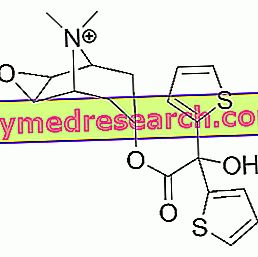 | Echinacea, botanical | Echinacea supplements | Echinacea properties |
Echinacea purpurea (L.) Moench.
Echinacea angustifolia Rudbechia (L.)
Echinacea pallida
Fam Asteraceae
Sottofam. Tubuliflorae
Description
Echinacea is a perennial herbaceous plant, lively, with a simple stem, 1-1.5 m high, hollow at the base that tapers upwards.
Leaves are petiolate, basal, sessile the highest, ovate ( in Echinacea purpurea.), Elongated elliptic-lanceolate (in E.angustifolia and in E. pallida ), with an integer margin and three salient ribs.

Fruit: it is a tapered achene with a quadrangular section with a crown (pappus), light brown or with a darker band at the apex ( in Echinacea pallida and in E. angustifolia ).
The taproot ( E. angustifolia e pallida ) or fasciculata ( Echinacea purpurea ) root is irregularly cylindrical, brown in color with V-shaped scars.
Echinacea also has an underground rhizome for vegetative reproduction.
The seeds are pear-shaped.
The taste is first sweet, then sweet and sour; the smell is zero.
Areal
To the genus Echinacea belong 9 species native to the temperate zones of North America, from the border with Canada to the Rocky Mountains, up to the Gulf of Mexico, where these plants were used by Indian populations to heal wounds and to cure snake bites. Currently 3 species are grown for commercial use: E. pallida, E. angustifolia, E.purpurea ..
Echinacea angustifolia prefers cold climates and dry grasslands with loose soils of various nature, with a pH up to 8.
Echinaceapallida lives in sparse woods, rocky grasslands and more humid soils.
Echinacea purpurea lives in wide grasslands and thickets.
Culture
Echinacea is grown both as an ornamental and a pharmaceutical plant, with different varieties.
Climate: from desert-steppe to cooler and wetter.
Soil: from poor to more fertile.
Crop rotation: do not plant after corn or sugar beet, but after fodder cereals, sunflowers or legumes. Use organic, non-chemical fertilizers. The propagation is done either by seed or by division of the tufts or by "in vitro" techniques. The seed germination capacity lasts 3 years.
Sowing: the dormancy is high in E. angustifolia, low in the other 2. The healthy seed, after a disinfection with sodium hypochlorite and rinsing with specific fungicides, is planted at a temperature between 15 and 25 ° C. seedling is 6-10 cm high and has 2 true developed leaves (after about two months of cultivation), the field is transplanted. Generally it is done in spring by placing the plants in rows 40-50 cm apart and 20-30 cm apart. This allows a mechanical collection.
Adversity: Echinacea is affected by the Watermelon Mosaic Virus (CMV) which causes alterations and yellowing of the leaves, reduction of petals and dwarfism, which compromises the yield of the plant and alters the chemical composition of the extracts obtained from it. It is useful to use organic farming methods, with predatory insects, Bordeaux mixture, pyrethrum and airing well.
Harvest: both the epigeal aerial part (in full bloom) and the hypogean part, roots (in autumn) are collected from the 2nd year. In Italy about 30 hectares are cultivated in Piedmont, Veneto, Umbria, Tuscany, Sardinia, Basilicata and Puglia. Neither latitude nor altitude is important for yielding active principles.
uses
Echinacea is one of the most widely used medicinal plants in the pharmacological field, for the many therapeutic uses, even if the action is not comparable to the single constituents: it has an immunostimulant action related to the flu states and to the cooling illnesses, with adaptogenic drug configuration adjuvant of recurrent respiratory and urinary tract infections.
Important is the preventive effect of the extract, taken for a few days at the first symptoms. It also has antibacterial activity evulneraria: with the root are made ointments for bandaging wounds and ulcers. It also has antiviral and radical-scavenger activity
Watch the video
X Watch the video on youtube



